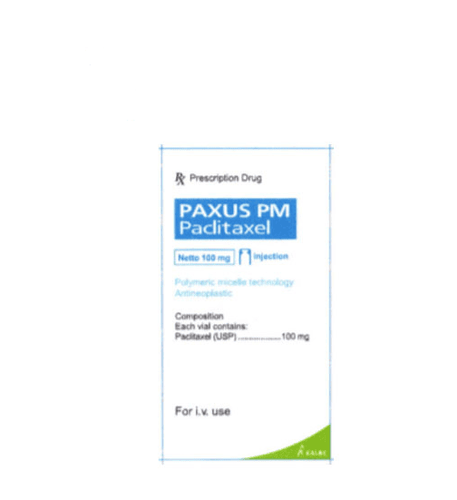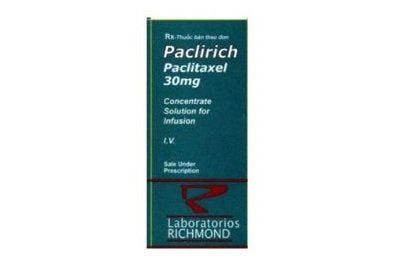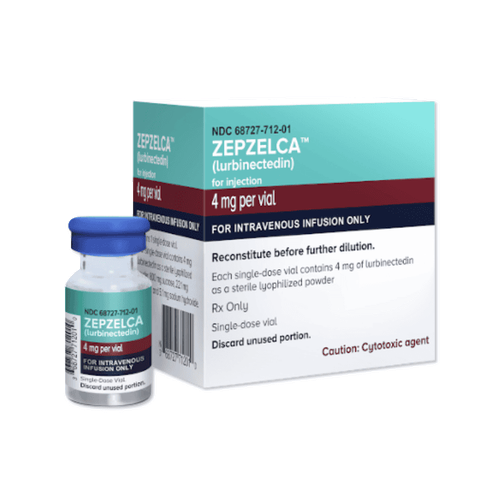This is an automatically translated article.
Kunitaxel drug is prepared in the form of an injectable solution with the main ingredient in the drug being Paclitaxel 100mg/16.67ml. So what does Kunitaxel drug work and how to use it, let's find out through the article below.
1. What does Kunitaxel do?
The main ingredient of Kunitaxel is Paclitaxel, which is an anti-cancer agent, and has the effect of modulating the immune response, cytostatic, this active substance belongs to the Taxane group.Kunitaxel is indicated in the following cases:
Treatment of metastatic ovarian cancer in cases where conventional treatments with anthracyclines and platinum have failed or are contraindicated. Kunitaxel is used in combination with doxorubicin as adjuvant therapy in the treatment of metastatic breast cancer. Treatment of metastatic breast cancer in cases where conventional therapies with anthracyclines have failed or where breast cancer recurs within 6 months of adjuvant therapy. Treatment of non-small cell lung cancer, treatment of AIDS-related Kaposi cancer. Kunitaxel is contraindicated in the following cases:
People with hypersensitivity to paclitaxel or to any component of the drug Kunitaxel, especially hypersensitivity to Cremophor EL oil. Patients with neutrophil count < 1500/mm3 (1.5 x 109/liter) or with obvious motor neuropathy. Pregnant women. Women are breastfeeding. Children under 18 years of age because there is currently a lack of data on safety and efficacy for these subjects. Notes and precautions when using Kunitaxel:
It is necessary to reduce the dose of Kunitaxel in patients with liver dysfunction or impairment. Kunitaxel is not recommended for use in cases where transaminases are 10 times higher than the upper limit of normal, or bilirubin > 7.5 mg/100 ml or 5 times the upper limit of normal. Use with caution in people with heart disease. In Kunitaxel, the excipient is cremophor EL, which is more likely to cause anaphylactoid reactions due to excessive histamine release in patients with hypersensitivity to cremophor EL. Therefore, hypersensitivity prophylaxis should be used prior to treatment with Kunitaxel and preparedness for anaphylactic reactions should be prepared. Kunitaxel should be used with caution in patients with a history of chemotherapy-induced peripheral neuropathy or diabetic neuropathy. When multiple drugs are administered sequentially, Kunitaxel should be administered before platinum derivatives to reduce the risk of myelosuppression. The use of Kunitaxel in the elderly is associated with an increased risk of toxicity (eg, neuropathy, agranulocytosis).
2. Dosage and how to use Kunitaxel
Before the course of treatment with Kunitaxel, the following drugs should be used:
12 hours and 6 hours before the course of treatment: Use dexamethasone 20mg, orally or intravenously (14 hours and 7 hours). In the case of HIV-infected patients, the dose of oral dexamethasone can be reduced to 10 mg. 30 - 60 minutes before treatment: Use cimetidine 300mg intravenously or ranitidine 50mg and diphenhydramine 50mg. In the treatment: Injection of Kunitaxel 135 - 175mg/m2, intravenous infusion over 3 hours or 24 hours, within 3 weeks. Do not repeat treatment when leukocytes < 1500/mm3, platelets < 100000/mm3.
The degree of response to therapy using Kunitaxel drug depends on the tumor nature, tumor size and the increase in tolerance to previous platinum-containing chemotherapy.
Treatment with Kunitaxel must be carried out by a physician experienced in anti-cancer chemotherapy.
Ovarian cancer: First choice regimen: When using cisplatin in combination for the initial treatment of advanced ovarian cancer, 2 regimens with Kunitaxel are recommended. Attention should be paid to toxicity when selecting an appropriate regimen for a patient. One regimen used Kunitaxel at a dose of 175 mg/m2 (body area) intravenously over 3 hours, followed by an intravenous infusion of cisplatin at 75 mg/m2, every 3 weeks. Another regimen used Kunitaxel at a dose of 135 mg/m2 intravenously over 24 hours, followed by an intravenous infusion of cisplatin at a dose of 75 mg/m2, every 3 weeks. Second-line regimen: Use as monotherapy in patients with metastatic ovarian cancer who have not responded to first-line therapy or subsequent chemotherapy. The regimen recommends using Kunitaxel at a dose of 135 or 175 mg/m2 intravenously over 3 hours and repeated every 3 weeks if tolerated. Breast cancer: Adjuvant treatment of breast cancer with lymph nodes: Use the drug Kunitaxel at a dose of 175 mg/m2 intravenously in 3 hours, every 3 weeks, 4 times continuously, after completing the use. use doxorubicin in combination regimens. Second-line regimen for the treatment of advanced breast cancer: In case of metastatic breast cancer that has been refractory to chemotherapy, or where breast cancer has recurred within 6 months of adjuvant therapy, using Kunitaxel drug with the usual dose is 175mg/m2 intravenously over 3 hours, every 3 weeks. Non-small cell lung cancer: Use of Kunitaxel in combination with cisplatin in patients with no indication for surgery or radiation. The recommended regimen is Kunitaxel at a dose of 135 mg/m2 intravenously over 24 hours, followed by an intravenous infusion of cisplatin at a dose of 75 mg/m2, every 3 weeks. Another regimen, using Kunitaxel at a dose of 175 mg/m2 intravenously over 3 hours, then cisplatin at a dose of 80 mg/m2, every 3 weeks. AIDS-related Kaposi's sarcoma: For patients with advanced HIV infection, Kunitaxel should be initiated only if the neutrophil count is at least 1000/mm3. There are two recommended Kunitaxel regimens. One regimen used Kunitaxel at a dose of 135 mg/m2 intravenously over 3 hours every 3 weeks. Another regimen uses Kunitaxel at a dose of 100 mg/m2 intravenously over 3 hours, every 2 weeks. The dose level of Kunitaxel may be reduced in patients with hepatic impairment. In patients with a severely reduced granulocyte count (less than 0.5 x 109/liter) (500/mm3) during long-term treatment with Kunitaxel, the dose should be reduced by 20%. A repeat course of Kunitaxel treatment is only carried out when the granulocyte count is ≥ 1,500 cells/mm3 and the platelet count is ≥ 100,000 cells/mm3. For HIV-infected patients, the Kunitaxel cycle should only be repeated when the granulocyte count is at least 1000/mm3. How to use Kunitaxel:
The mixing of Kunitaxel for intravenous infusion must be done by an experienced person in an appropriate room. When mixing Kunitaxel, it is necessary to wear gloves and exercise caution to avoid contact with the skin and mucous membranes. If skin is in contact with Kunitaxel, wash thoroughly with soap and water; If the mucosa is in contact with Kunitaxel, rinse thoroughly with water. The mixing of Kunitaxel drug needs to ensure sterility. Solvents for dilution of Kunitaxel can be: 5% glucose solution, 0.9% sodium chloride solution, 5% glucose solution and ringer's mixture or a mixture of 0.9% sodium chloride solution and 5% glucose solution. . Usually, Kunitaxel is mixed into one of the above solutions so that the infusion solution has a paclitaxel concentration of 0.3 - 1.2 mg/ml. Use only infusion bottles made of glass, polypropylene or polyolefin. The transmission set needs to be made of polyethylene. The Kunitaxel infusion solution prepared as above is physico-chemically stable for about 27 hours at room temperature (about 25 degrees Celsius) and under light. Administer the Kunitaxel infusion immediately or within 3 hours of the completion of the reconstitution. Do not keep the Kunitaxel reconstituted infusion solution in the refrigerator. During preparation, Kunitaxel infusion solution may become slightly cloudy. This is due to the solvent of the drug Kunitaxel, so even filtering does not make it clear. When infusion, the Kunitaxel solution should be allowed to flow through a filter with a vial hole not larger than 0.22 micrometers.
3. Kunitaxel side effects
During the use of Kunitaxel, you may encounter some side effects of the drug, including:
Myelosuppression. Lower blood pressure. Increase liver enzymes. Joint pain. Digestive disorders . Hair loss. Peripheral neuropathy. If you see unusual symptoms when using Kunitaxel, you need to immediately notify the treating doctor to promptly handle
Please dial HOTLINE for more information or register for an appointment HERE. Download MyVinmec app to make appointments faster and to manage your bookings easily.













